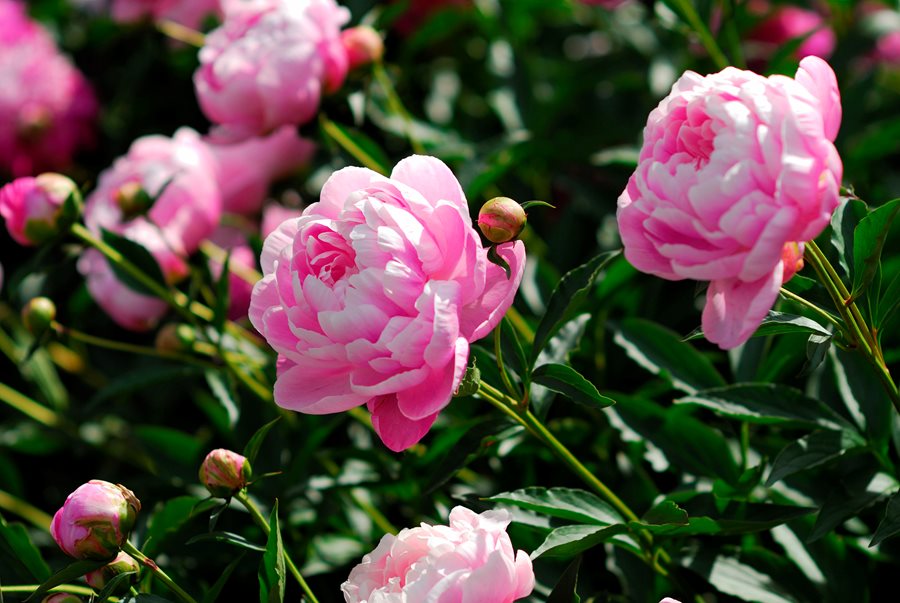
Peonies are beloved for their lush blooms and romantic charm, but there are other flowers that share similar characteristics and beauty. In this article, we’ll explore some stunning alternatives to peonies, including rose of Sharon, ranunculus, dahlias, and camellias, highlighting their unique qualities and how they differ from peonies.
I. Introduction
A. Fascination with Peonies
Peonies have captivated gardeners and flower enthusiasts for centuries with their luxurious petals, vibrant colors, and enchanting fragrance. However, their short blooming season and specific growing requirements may lead some to seek alternatives that offer similar beauty and appeal.
B. Similar Flowers Worth Exploring
While nothing quite matches the exquisite allure of peonies, several other flowers possess comparable characteristics and can serve as delightful substitutes or complementary additions to garden landscapes. These flowers may share traits such as full, layered petals, bold colors, and a romantic aesthetic.
C. Purpose of the Article
The purpose of this article is to introduce readers to flowers that resemble peonies but have distinct qualities and growing requirements. By exploring these alternative flowers, readers can discover new favorites to incorporate into their gardens and arrangements, expanding their floral repertoire and enhancing their appreciation for botanical diversity.
II. Rose of Sharon (Hibiscus syriacus)
A. Description and Characteristics
Rose of Sharon, also known as Hibiscus syriacus, is a deciduous shrub prized for its showy, hibiscus-like flowers that bloom from summer to fall. These flowers feature five overlapping petals in shades of pink, purple, blue, or white, often with contrasting centers and prominent stamens.
B. Growing Conditions and Care
Rose of Sharon thrives in full sun to partial shade and well-drained soil. It is relatively low-maintenance once established, requiring regular watering during dry periods and occasional pruning to maintain shape and encourage blooming. Hardy in USDA zones 5-9, it can withstand a range of climates and soil types.
C. Visual Distinctions from Peonies
While rose of Sharon shares some visual similarities with peonies, such as the layered arrangement of petals and vibrant colors, there are notable differences. Rose of Sharon flowers are more delicate and trumpet-shaped, with a single layer of petals compared to the lush, double blooms of peonies.
III. Ranunculus (Ranunculus asiaticus)
A. Overview and Features
Ranunculus, also known as Persian buttercups, are prized for their intricate, rose-like blooms and wide range of colors. These spring-flowering bulbs produce lush, multi-petaled flowers in shades of pink, red, orange, yellow, and white, often with contrasting centers and ruffled edges.
B. Cultivation and Maintenance
Ranunculus thrives in cool, temperate climates and well-drained soil with ample sunlight. They are typically grown from corms planted in the fall for spring blooms. Ranunculus require regular watering, especially during dry periods, and benefit from mulching to conserve soil moisture and suppress weeds.
C. Contrasting Attributes with Peonies
While ranunculus may resemble peonies in their layered petals and vibrant colors, they differ in bloom structure and growing requirements. Ranunculus blooms are smaller and more delicate, with a wider range of colors and a longer blooming period. They also prefer cooler temperatures and well-drained soil.
IV. Dahlias (Dahlia spp.)
A. Characteristics and Varieties
Dahlias are prized for their bold, showy blooms and diverse range of colors, shapes, and sizes. These tender perennials produce intricate flowers with layers of petals in shades of red, orange, pink, purple, yellow, and white, often with contrasting centers and textures.
B. Cultivation Tips and Requirements
Dahlias thrive in full sun and well-drained soil with regular moisture. They are typically grown from tubers planted in the spring after the danger of frost has passed. Dahlias require staking for support, regular watering, and occasional deadheading to prolong blooming and maintain plant vigor.
C. Identifying Differences from Peonies
While dahlias share some visual similarities with peonies, such as the full, layered blooms and vibrant colors, they have distinct growth habits and bloom structures. Dahlias produce single, semi-double, or double blooms on tall, upright stems, with a longer blooming period extending from midsummer to fall.
V. Camellias (Camellia spp.)
A. Description and Traits
Camellias are prized for their elegant, waxy blooms and glossy evergreen foliage. These flowering shrubs produce large, solitary flowers in shades of white, pink, red, and bicolor, with a symmetrical arrangement of petals and prominent yellow stamens.
B. Growing Guidelines and Considerations
Camellias thrive in partial shade and well-drained, acidic soil. They are typically grown in regions with mild winters and cool, humid summers, such as USDA zones 7-10. Camellias require regular watering, mulching, and protection from harsh sunlight and strong winds.
C. Distinguishing Features Compared to Peonies
While camellias may share some visual similarities with peonies, such as the lush, full blooms and vibrant colors, they have distinct growth habits and bloom structures. Camellia flowers are typically smaller and more symmetrical, with glossy, evergreen foliage and a longer blooming period in late fall to early spring.




